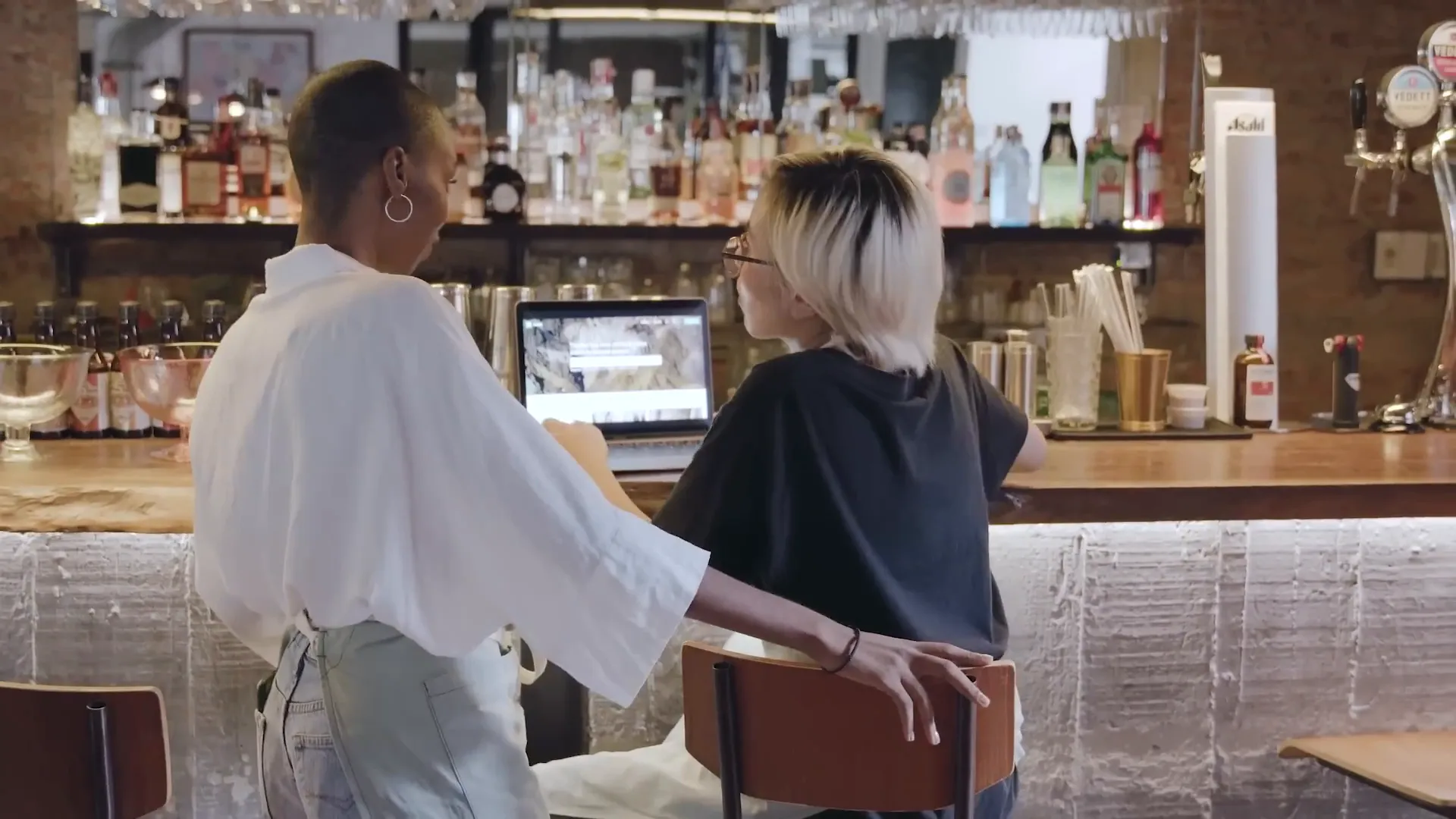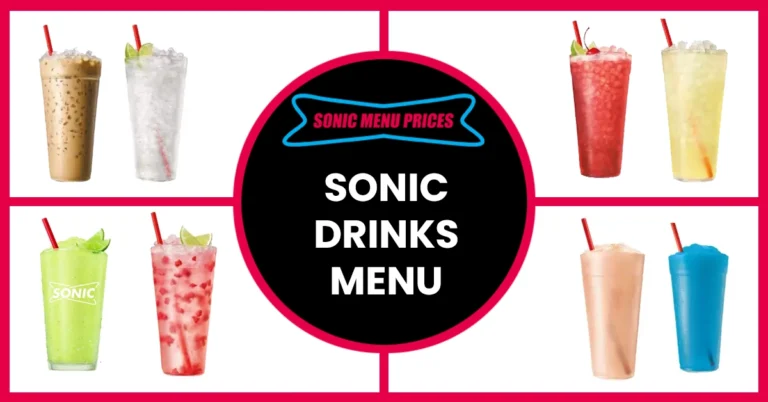Sonic’s History: Why Sonic Is The Last Drive-In Standing
When we talk about Sonic’s History. Sonic has been dishing out Cherry Lime ads and cheesy tots for decades now, thanks in part to the chain’s unique status as one of the only drive-in diners still in operation. But how did this classic burger joint get its start, and how has it managed to withstand competition from traditional drive-throughs while staying true to its carhop roots? Well, today we are pulling up to the history of Sonic.

How Drive-In Started
As we talk about Sonic’s History once upon a time, America was a country powered by optimism, fueled by chrome, and filled with people who believed that the ultimate dining experience involved never actually leaving their cars. A dream as American as apple pie or perhaps more appropriately, a cheeseburger delivered by a roller skating waitress named Linda. The drive-in was not merely a place to get food; it was a shrine to automotive worship—a cultural institution where the internal combustion engine could meet the external combustion of a patty grilling at 400°F. Cars and burgers together at last!
Automobiles and Sonic Drive-In
The United States is pretty unique in its love of not just automobiles but car culture. From greasers, modders, and cars on hydraulics, there’s always been a deep love for a cool set of wheels. Alongside the rise of car culture and interstate driving, the early 20th century saw the rise of the American diner—a safe harbor for hungry travelers and coffee addicts alike. Diners offered the promise of full meals such as pancakes, fries, and milkshakes at odd hours when no reasonable person should be eating. It was an era in which meals were served with a smile and probably a cigarette.
These diners, wonderful as they were, had one problem: they required people to get out of their cars. It’s tough to show off your car when it’s outside in the parking lot. Also, sometimes you just want to eat a cheeseburger in the privacy of your own sedan. This was a problem in desperate need of a solution, and that solution arrived in the form of the drive-in. At a drive-in, there was no need to trouble yourself with walking or sitting inside like some sort of cave person. Customers could stay in their vehicles and give their order to a server on roller skates or a speaker box, and voila! Dinner is served, usually with a little tray that hooks to the door.
Diner Culture in USA
These drive-ins, resplendent with neon signs and promises of hamburgers the size of hubcaps, grew rapidly in the mid-20th century. It was the golden age of American diner culture. Drive-ins were part theater, part gastronomic experience, and part auto show—a triumphant trinity of Americana combining to make a popular hangout site for a few glorious decades.
It seemed that no one could challenge the dominance of the drive-in. Just as Americans had perfected the art of eating while seated in a motor vehicle, a new player emerged on the scene to further revolutionize this admittedly strange concept: Sonic Drive-In.
Idea Back in 1953
In 1953, in the windswept town of Shawnee, Oklahoma, a man named Troy Smith had an idea: what if, instead of simply serving ice cream and root beer at a small walk-up root beer stand, people could drive right up and be served by a cheerful car hop? This concept, dubbed Top Hat Drive-In, would evolve into something truly spectacular.
Sonic’s Name was Chosen Back in 1959
In 1959, it took on the name we all know today: Sonic. The name wasn’t chosen randomly; it was meant to invoke a sense of speed. Fast food wasn’t fast enough anymore; it had to be supersonic. Smith’s vision was simple: create a space where customers could order from the comfort of their cars without the pesky need for indoor dining or walking. The original Sonic locations were like the dining equivalent of a sci-fi movie. There were no tables, no booths, not even a counter. There were only cars, car hops, and the distant hum of an intercom.
If you wanted a sit-down meal, you were free to sit in your car and imagine that your Chevy’s bench seat was as comfortable as a diner booth, which in some cases might be true. In its earliest form, Sonic was an ode to simplicity: burgers, fries, shakes, and Smith’s old favorite, root beer. But over time, the simplicity was subverted.
Sonic Original Menu
Sonic’s menu began to grow, as did its influence. Its early success wasn’t just built on burgers and fries—there were plenty of restaurants that also dealt with that. It was built on novelty.
In a world increasingly dominated by fast food chains that relied at least partially on indoor seating, Sonic stood apart as a unique experience and an appealing piece of nostalgia for the commuter who was happy to eat a burger in their car or while sitting on the hood like the coolest kid in a 1950s drag racing movie.
Popularity in 1990
By the time the 1990s rolled around, Sonic was no longer just a regional novelty. The company had gone national, spreading its influence and tater tots across the country. This period of growth, or Sonic Boom if you will, was partly due to the chain’s more affordable franchise licenses but also the low entry construction costs. After all, you mostly just need a parking lot with an enclosed kitchen and enough room for the car hops to roll through.
Advertisement of the Sonic Drive-In
As Sonic locations multiplied like wet gremlins, their menu expanded to match. Part of the charm of Sonic has always been that it doesn’t take itself too seriously. After all, a drive-in, while fun, is kind of a strange concept. You’re sitting on one set of wheels while a person on a smaller set of wheels brings you food, and eating cheese fries in your car is typically only done in an emergency.
Sonic embraces idiosyncrasy, launching a series of commercials in which two men sit in a car eating Sonic food and having entertainingly aimless conversations that seem like someone had accidentally miked up a pair of average dudes on a road trip. These ads became iconic in part because they captured the very essence of Sonic: a place where you sit and hang out while you eat a foot-long chili dog in your car.
Fast Food Introduction at Sonic
During this time, the Sonic menu also expanded into a smorgasbord of fast food oddities. Burgers were still there, but also onion rings, mozzarella sticks, and slushes that came in colors not found in nature. There were foot-long hot dogs, breakfast burritos, and something Sonic referred to as toaster sandwiches, which are made with Texas toast and a deliciously greasy tribute to car bloating.
Sonic Drinks Combinations
Then there were the fountain drinks. Sonic’s ability to mix a thousand different drink combinations became legendary. You can mix Diet Coke with cherry vanilla Nerds candy or something inexplicably called ocean water, which is a flavor that sounds like a mistake but tastes like a vacation. While other fast food chains were offering a limited palette of cola and lemon-lime soda, Sonic was offering the entire rainbow. This make-your-own drink menu became one of the drive-in chain’s most popular selling points.
Sonic Happy Hour
One of Sonic’s most beloved innovations was its happy hour—a time of day when drinks were cheap. The sun was setting, and teenagers across America could line up in their cars to order half-price slushes. Happy hour has long been a bar and restaurant strategy to get folks in the door at times when business is traditionally slower, with the hope that cheap drinks will lead to customers spending more money on food. But Sonic timed theirs from 2:00 to 4:00 p.m. to appeal to teenagers just getting out of school for the day and anyone else who had some free time in the early afternoon.
Sonic’s status as a hangout spot certainly appealed to teens looking for a spot to commune where they could stay in their car and sip the nuttiest drink they could think of. Sonic’s happy hour became a hit, and why wouldn’t it? Who doesn’t want a cheap 44 oz lemonade with Nerds in it?
Controversy on the Idea of Sonic
But no great success story is without its critics. Sonic’s rise wasn’t without controversy, though it was controversy of a very niche kind. For one thing, not everyone was on board with the idea of car hops. While some viewed them as a quirky throwback to a simpler time, others thought of them as a relic of a past best left forgotten when roller skates were somehow expected to be functional in a fast-paced food service environment. But even today, many car hops still roll from car to car, hoping the novelty of mobile delivery and the risk of potential injury will earn larger tips.
Sonic Menu Nutritional Values
There were also complaints about the nutritional value of Sonic’s food. But in the chain’s defense, Sonic certainly never claimed to be selling health food. While a lot of Sonic’s sustainability revolves around the nostalgia of diners, car culture, and car hops, it also applies to their menu. Many folks enjoy the idea of a diner-esque menu that sheds the responsibility of carb counting or deep frying. While chains like Subway have argued they’re genuinely healthy, Sonic has been content to know what they are and revel in it.
Sonic’s Obsession with Fast Food
Today, Sonic stands as a sort of quirky relic of a bygone era. It’s one of the few remaining major drive-in operations—a living tribute to a time when the American dream was best consumed from behind a steering wheel. While many of its competitors stuck with more efficient service and moved towards more health-conscious menu items, Sonic held fast to its roots. Today’s menu features everything from jalapeno poppers to grilled cheese sandwiches, and their signature drink combinations remain as inventive and outrageous as ever.
But Sonic is not exclusively a drive-in anymore. Most locations offer at least a drive-through option for those who do not wish to park their car. Some locations now even have indoor seating, though it’s never quite as charming as eating in your car while trying to balance a tray of mozzarella sticks. Still, Sonic remains a bastion of the drive-in experience, offering a slice of nostalgia with every bite.
Sonic Drive-In Important Links
Customer Services Links
Sonic Drive-in Office: Oklahoma City, Oklahoma
Sonic Contact Number: 1-866-657-6642
Official Website: https://order.sonicdrivein.com/
Sonic Drive-In Offer: https://www.sonicdrivein.com/deals
Sonic Gift Card: https://www.sonicdrivein.com/gift-cards
Sonic Mobile Apps: Sonic Drive-In App
Sonic Drive-In Social Media Accounts
Final thoughts
So as we ponder the future of drive-ins, we can rest assured that for now, at least, there’s one place where you can still sit in your car, sip on a cherry limeade, and crush some tots. That place is Sonic, where fast food meets the open road and where the spirit of Americana is alive and well, if slightly over-caffeinated and filled with candy.
What do you think? Are you a fan of Sonic’s nostalgic drive-in? Let us know in the comments below, and while you’re at it, check out some of these other weird history food videos!














